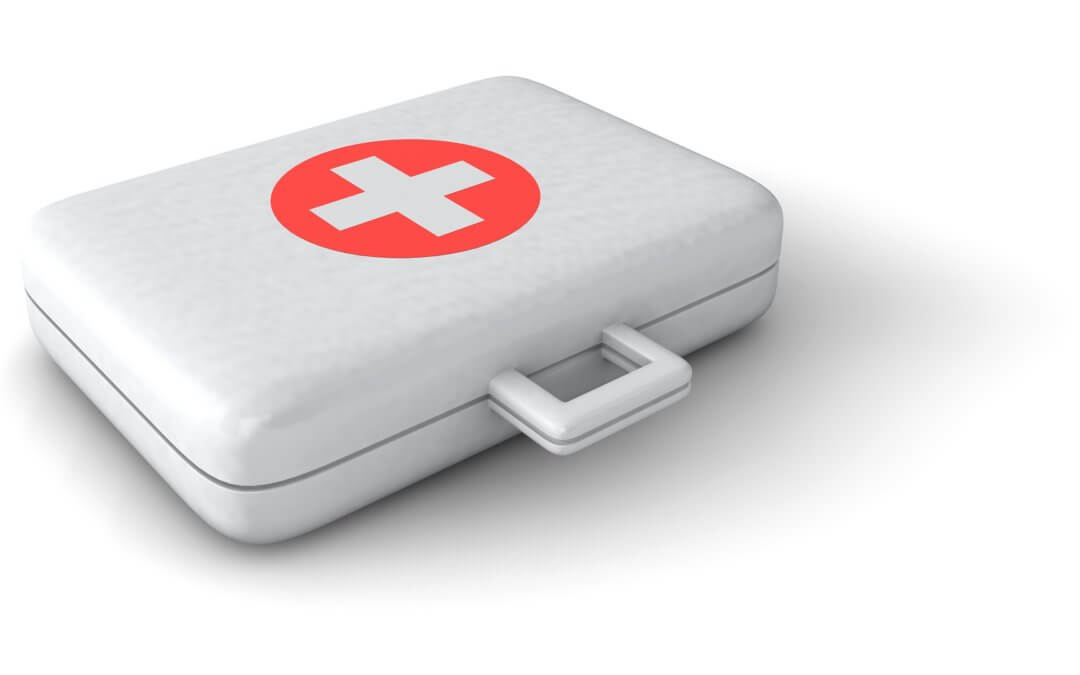Our pets form an important part of our family and we often include them in family holidays, day trips and weekend adventures. Most of us will have a human first aid kit at the ready for us on these adventures but what about our pets?
Any emergencies involving our pets can be very traumatic and scary not only for them, but also for us as owners. When planning a trip with your pet we recommend familiarising yourself with the local area, ensuring that you have contact information for the nearest vet clinic and 24-hour emergency clinic in the area.
If an emergency does occur, it is important that you try to remain as calm as possible as this will help your pet remain calm. Contact the veterinary clinic or 24-hour emergency centre as soon as possible for advice and/or to let them know you are on your way.
In some circumstances you will be required to administer first aid to your pet whilst in transit to the nearest vet. If this is required it is important to assess the risk not only to your pet in doing so but also yourself. When they are in pain pets will often lash out and may become aggressive to protect themselves. It is not uncommon for a pet to bite when panicked and painful. We recommend carrying towels, muzzles and blankets with you when away with your pets so keep you protected in the event of having to move an injured pet.
Below are some notes on commonly encountered emergencies and basic first aid tips!
Snake Bite
- Signs of snake bite include vomiting, dilated pupils, wobbly on feet, and collapse
- If you suspect snake envenomation, keep the pet contained and quiet, then get to the veterinarian as soon as possible to have the best chance of recovery
Tick Paralysis
- Commonly found along the east coast of Australia form QLD to VIC. When travelling to these areas ensure your pet is up to date with a flea and tick prevention. We stock a number of varieties at the clinic for purchase
- If you are travelling in a known tick area, it is recommended to check over your pet daily to look for ticks (particularly between the toes and in the ears)
- Clinical signs usually wont present until 3-5 days after the tick has attached to your pet. Signs include heavy breathing (panting, noisy breathing and possibly grunting), coughing, vomiting, heavy salivation, wobbly legs (especially the back legs – dogs tend to sit but not stand), collapse
- If you notice any of these signs in your pet contact the nearest vet
Wounds
- Apply pressure with gauze if bleeding profusely
- Wrap large wounds with a bandage to keep clean
- Seek veterinary attention as wounds can become infected and need antibiotics, or may require suturing
Shock
- Animals will often go into shock after a severe injury/trauma or a fright
- Symptoms include weak pulse, pale gum colour, shallow breathing and dazed appearance
- Keep animal restrained, quiet and warm
- If unconscious, keep head level with the rest of body
Burns
- Flush area immediately with large quantities of cold water
- Seek veterinary consultation
Fracture
- Fractures may be obvious with the limb being held at an odd angle, or there could just be pain and inability to use the limb
- Muzzle as needed to keep yourself safe
- Transport to the veterinarian immediately, supporting the injured part as best you can
Poisoning
- Signs include convulsions, diarrhoea, salivation, weakness, depression and pain
- Record what the pet ingested and how much
- Call your veterinarian
- Do not try to induce vomiting unless advised by your veterinarian – contact the vet first as some toxins will cause more damage if vomiting is induced
- If toxins are on the skin or coat, ask for directions on if and how to wash them off
Heatstroke
- Symptoms include rapid or laboured breathing, vomiting, high body temperature, collapse
- Gently wrap in a cool wet towel
- Transport to the veterinarian
- Do not over cool animal. Stop when rectal temperature reaches 39 degrees Celsius






